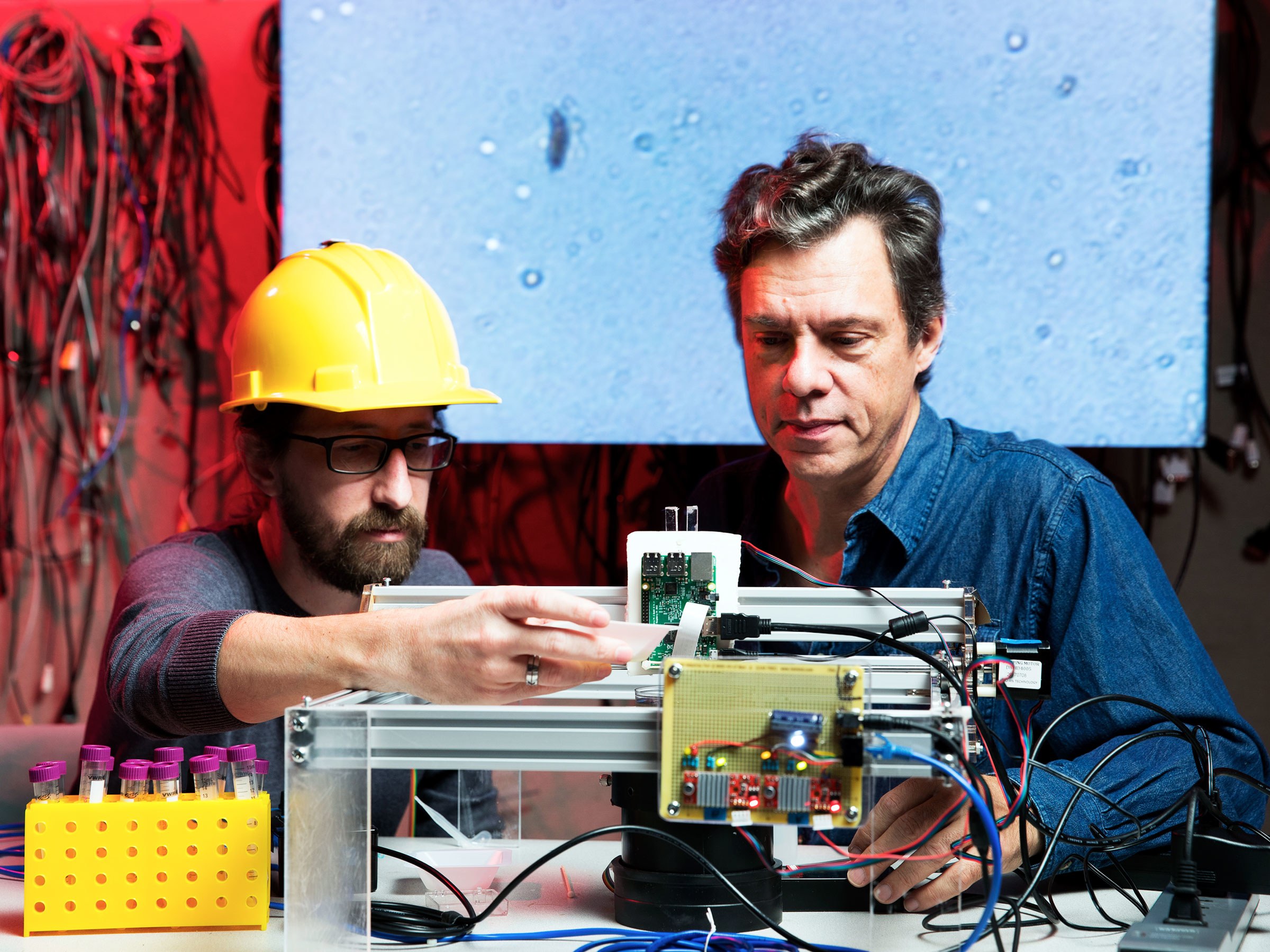Do you like a planet that hasn’t yet melted? Do you like sushi? How about breathing? Then you’re secretly in love with plankton, tiny marine organisms that float around at the mercy of currents. They sequester carbon dioxide and provide two thirds of the oxygen in our atmosphere and sacrifice themselves as baby food for the young fish that eventually end up on your plate.
copyright by www.wired.com
 Yet science knows little about the complex dynamics of plankton on ocean-wide scales. So researchers are asking the machines for help, developing clever robots that use AI to examine and classify plankton , the pivotal organisms at the base of our oceanic food chain. That kind of work will be critical as Earth’s oceans continue to transform, potentially throwing ecosystems in chaos.
Yet science knows little about the complex dynamics of plankton on ocean-wide scales. So researchers are asking the machines for help, developing clever robots that use AI to examine and classify plankton , the pivotal organisms at the base of our oceanic food chain. That kind of work will be critical as Earth’s oceans continue to transform, potentially throwing ecosystems in chaos.
Take IBM’s ocean-going microscopes —which, conveniently, leverage the same technology sitting in your pocket right now. Two LEDs sit a few inches above the same kind of image sensor you’d find in a smartphone. When plankton pass over the sensor, they cast two shadows. “So by taking two pictures, one with each LED, you can get the 3-D position of all the plankton in a drop of water on the image sensor,” says Tom Zimmerman, a researcher at IBM.
So you’ve got an image of some plankton, which could be one of two types: zooplankton are animals like fish larvae, and phytoplankton are marine algae. The old way of identifying them—there are over 4,000 species of phytoplankton alone—used to be to sort through it with the eyeballs of a human expert. But now researchers have artificial intelligence: IBM is working to integrate AI into the system to automatically quantify and identify the specks. The idea is to create a floating instrument that dangles hoses of different lengths so it can sample plankton concentrates at different depths. A network of these microscopes could then alert scientists to anomalies as they unfold in real time.
Take, for example, the misadventures of a zooplankton called a copepod. It eats algae, which can contain a toxin that gets it drunk. “Now, you think that would be fun for the copepods, but it isn’t, because usually copepods dart around in random directions which helps them avoid being eaten by their predators,” says Zimmerman. “But when they get drunk they go straight and fast, which makes it really easy for them to get picked off by their predators.” […]
read more – copyright by www.wired.com


Do you like a planet that hasn’t yet melted? Do you like sushi? How about breathing? Then you’re secretly in love with plankton, tiny marine organisms that float around at the mercy of currents. They sequester carbon dioxide and provide two thirds of the oxygen in our atmosphere and sacrifice themselves as baby food for the young fish that eventually end up on your plate.
copyright by www.wired.com
Take IBM’s ocean-going microscopes —which, conveniently, leverage the same technology sitting in your pocket right now. Two LEDs sit a few inches above the same kind of image sensor you’d find in a smartphone. When plankton pass over the sensor, they cast two shadows. “So by taking two pictures, one with each LED, you can get the 3-D position of all the plankton in a drop of water on the image sensor,” says Tom Zimmerman, a researcher at IBM.
So you’ve got an image of some plankton, which could be one of two types: zooplankton are animals like fish larvae, and phytoplankton are marine algae. The old way of identifying them—there are over 4,000 species of phytoplankton alone—used to be to sort through it with the eyeballs of a human expert. But now researchers have artificial intelligence: IBM is working to integrate AI into the system to automatically quantify and identify the specks. The idea is to create a floating instrument that dangles hoses of different lengths so it can sample plankton concentrates at different depths. A network of these microscopes could then alert scientists to anomalies as they unfold in real time.
Take, for example, the misadventures of a zooplankton called a copepod. It eats algae, which can contain a toxin that gets it drunk. “Now, you think that would be fun for the copepods, but it isn’t, because usually copepods dart around in random directions which helps them avoid being eaten by their predators,” says Zimmerman. “But when they get drunk they go straight and fast, which makes it really easy for them to get picked off by their predators.” […]
read more – copyright by www.wired.com
Share this: